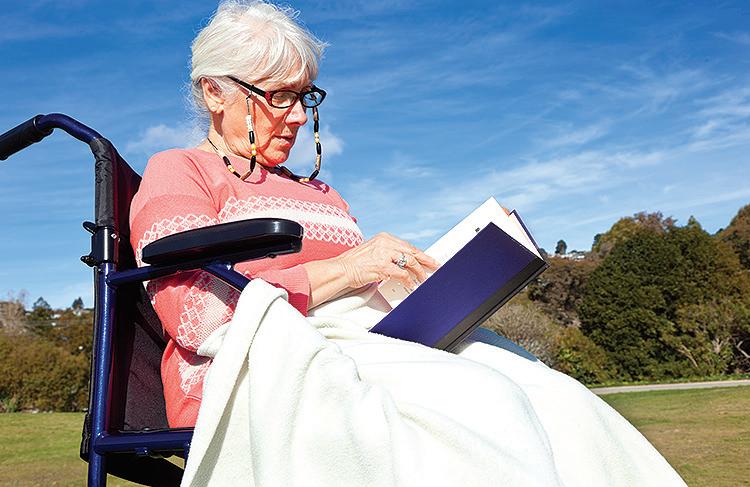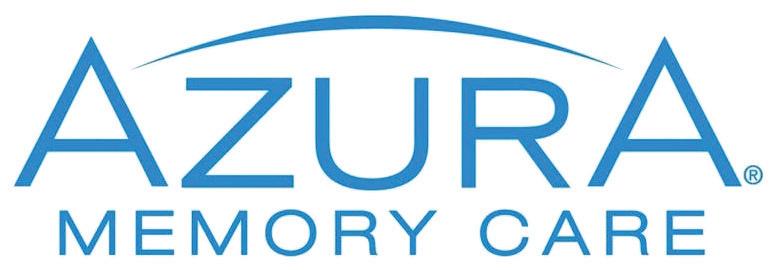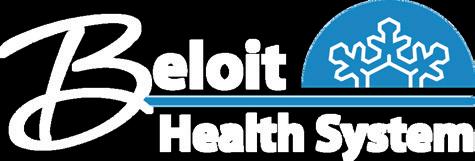EMPTY NESTERS
ALCOHOL CONSUMPTION AFTER 50 MANAGE AND TAME STRESS


ALCOHOL CONSUMPTION AFTER 50 MANAGE AND TAME STRESS


The rewards of parenting are bittersweet. Raising children successfully means they will one day leave home and embark on lives of their own. Once the proverbial chicks leave the nest, individuals may be left with a lot of empty home and a lot of time to fill.
According to the U.S. Census Bureau, there were 22.5 million empty nesters in the country in 2020, with most having become empty nesters between the ages of 40 and 60. Statistics Canada says roughly one-third of adults between the ages of 20 and 34 lived with their parents in 2023. Although some parents whose children
have reached adulthood still provide financial assistance to their grown children due to high costs of living, many empty nesters in their fifties have greater financial resources and much more time to fill their days with activities unrelated to parenting.
But how does one spend those hours when they had been filled with parenting-related obligations and activities for so long?
The following are five unique ways empty nesters can stay busy and socially engaged as they seek to avoid empty nest syndrome.
After all those years of putting children first, now is the time to make yourself the priority. Explore all of the ways to engage in self-care. Maybe you were thinking about signing up for a monthly massage package at a nearby wellness clinic but procrastinated because of the added expense? Or you may have wanted to splurge on a facial or new hair treatment? Now is the time to make those appointments.
Identify rewarding hobbies that might have been pushed to the back burner for years. If you always wanted to learn a new language, why not immerse yourself in it and the associated culture by spending a month or more in a country where that language is spoken? Now can be a great
time to pick up new hobbies as well. Aim for activities that are social in nature, like the ever-popular pickleball.
Travel is a popular pastime among empty nesters and retirees. When you no longer have to coordinate travel around school schedules and holidays, you can take advantage of great deals on off-peak travel and really see the country or even the world.
If parenting made it hard to attend certain social functions, now you’ll have the time to engage with friends more regularly. You can reach out to old friends and start a weekly walking group, join a book club, sign up for a fitness class together, or even do a monthly wine and dine meet-up at new restaurants in the area.
When children were still at home you likely lavished attention on them each day. You can redirect some of that affection to a pet who needs a good home. Visit a nearby animal shelter and pick out a pup or kitten looking for a good home.
Empty nesters have more free time to redirect to their own passion projects and interests.

Physical changes are a normal byproduct of aging. Gray hairs and less elastic skin that contributes to wrinkles may be among the more notable physical signs of aging, but older individuals also may note their vision is not what it once was.
Diminished vision can be a byproduct of various conditions. Aging individuals who have noticed a loss of vision may be dealing with age-related macular degeneration, or AMD. Seniors concerned by diminished vision can learn about the degeneration so they’re well-positioned to manage it if and when they need to.
What is AMD?
The National Eye Institute notes that age-related macular degeneration is an eye disease that is the leading cause of vision loss for older adults. In fact, Johns Hopkins Medicine notes age is the most common cause of severe loss of eyesight among people 50 and older.
The NEI notes that aging causes damage to the macula, which is the part of the eye that controls sharp, straight-ahead vision. When a person has AMD, his or her central vision is blurred.
Because it blurs the central vision, people who develop the disease may struggle to recognize faces, read, drive, or engage in activities that require close-up work, including cooking or fixing things around the house.
Are all cases the same?
According to the NEI, the degeneration
happens very slowly in some people and faster in others. Some people may not recognize they have vision loss even when they already have early AMD. In addition, there are two types:
• Dry AMD: This is the most common type of the disease and occurs as the macula gets thinner with age. It progresses slowly over several years, and occurs in three stages: early, intermediate and late.
• Wet AMD: This is considered a less common form of late AMD that the NEI notes typically causes faster vision loss. It occurs when abnormal blood vessels grow in the back of the eye and damage the macula. This type is treatable.
Does the disease produce symptoms? It produces different symptoms depending on the stage of the disease. Early dry AMD does not cause any symptoms, and the NEI notes some people with intermediate dry AMD may not experience symptoms. Those who do may notice symptoms such as mild blurriness in their central vision or difficulty seeing in low lighting.
Late wet or dry AMD patients may notice that straight lines are beginning to look wavy or crooked and there may be a blurry area near the center of their vision.
That blurriness can grow larger over time and people may begin to see blank spots. Colors also may seem less bright and people may have difficulty seeing in low lighting.
The NEI notes that adults over 55 are more likely to have AMD than any other group. People with a family history of AMD, Caucasians and smokers also have a higher risk of developing it. Quitting smoking, getting regular physical activity, maintaining healthy blood pressure and cholesterol levels, and eating a healthy diet that includes leafy greens and fish are some ways people can lower their AMD risk. AMD is most common among individuals over 50. More information is available at nei.nih.gov.
EDITOR: Melanie Bradley
PAGE DESIGNER: Jen DeGroot
CREATIVE DIRECTOR: Heidi Schulz
ADVERTISING
DIRECTOR: Vicki Vanderwerff

Patients are asked several routine questions during annual wellness exams. Among those queries are a subsection of questions regarding alcohol consumption. Doctors ask these questions to identify how much alcohol their patients consume and how often they drink. It’s important that patients of all ages answer such questions honestly, and that includes men and women over 50.
Binge drinking may not be a behavior people associate with individuals over 50, but this behavior is on the rise among aging men and women. The National Institute on Alcohol Abuse and Alcoholism (NIAAA) defines binge drinking as a pattern of alcohol consumption that elevates an individual’s blood alcohol concentration
(BAC) to 0.08 percent or higher. The NIAAA notes that such levels correspond to consuming five or more drinks (male) or four or more drinks (female) in a roughly two-hour period. Data from the National Survey on Drug Use and Health indicates that one in five adults between the ages of 60 and 64 and 12 percent of individuals age 65 and over report current binge drinking.
Binge drinking trends among individuals 60 and over alarm public health officials. The NIAAA notes that older adults are vulnerable to various problems when drinking alcohol, which can lead to bad interactions among people taking medications and increase risk for various health ailments. Such a reality makes it worth aging adults’ time to learn some of the basics of alcohol consumption after 50.
• Alcohol can exacerbate various medical conditions. Age is a notable risk factor for various medical conditions. For example, the National Institute on Aging notes that changes in the heart and blood vessels that occur naturally with age may increase a person’s risk of heart disease and related health problems. The NIAAA notes that adding alcohol to the mix as you age can worsen problems such as high blood pressure and congestive heart failure.
Additional conditions that can be exacerbated by heavy drinking include diabetes, liver problems, osteoporosis, and mood disorders.
• Alcohol can interact with various
medications. Prescription medications come with a lengthy rundown of warnings and instructions, which is enough to compel many people to avoid alcohol when taking such medicines. However, people may not be as careful with over-the-counter medications, even though the NIAAA warns that mixing alcohol with OTC medicines can be dangerous and even deadly.
OTC medications such as aspirin, acetaminophen, allergy medicines, and sleeping pills can interact badly with alcohol.
• Alcohol consumption should be limited to two drinks or less. As noted, a significant percentage of adults over 60 qualify as binge drinkers. That may alarm some older adults who do not feel as though they have a problem with alcohol but still meet the qualifications for binge drinking. Refraining from alcohol is arguably the safest option, but individuals over 50 who still like to enjoy a drink every now and then are urged to keep their consumption to two drinks or less in a day for men and one drink or less in a day for women. It’s important that individuals recognize they cannot save up drinking for one night of the week. So those who abstain six days a week cannot then consume between seven and 14 drinks on the day they drink. Such an approach is unhealthy, unsafe and potentially deadly.
Adults over 50 are urged to learn about the ways alcohol affects aging bodies. More information is available at niaaa.nih.gov.
There is no magic formula to ensure long-term health. However, if there were such an equation, sleep would be a critical component. Though adults may be able to function with less sleep than doctors recommend, the National Institutes of Health note that consistent lack of sufficient sleep can interfere with work, social functioning and driving ability.
The National Institute on Aging notes that adults of all ages generally need the same amount of sleep, typically between seven and nine hours of rest per night.
That’s an important distinction, as busy adults in mid-life might feel as though they can operate on less sleep without adversely affecting their overall health. However, in addition to the problems noted by the NIH, the NIA reports that ongoing lack of sleep, or even consistently poor sleep quality, can increase risk for cardiovascular disease, high blood pressure, diabetes, depression, and obesity.
Adults who feel their sleep quality is poor or those who aspire to sleep more each night can consider these three strategies to ensure a more restful night’s sleep.
Screens are everywhere in modern life, and that includes the bedroom. In fact, a recent National Sleep Foundation’s Sleep in America Poll found that 58 percent of survey participants acknowledged looking at screens within an hour before bedtime.
The NSF reports that device usage so close to bedtime can adversely affect sleep quality because the blue light emitted from screens has shorter wavelengths than other colors in the visible light spectrum, which results in more alertness than warmer tones. The blue light actually confuses the brain into thinking it’s earlier in the day, thus making it harder to fall asleep.
2.
Short naps can help people reenergize, but the timing of naps could adversely affect how well people sleep at night. The Mayo Clinic notes that napping after 3 p.m. can make it harder to sleep soundly

at night. And while short naps can provide a necessary jolt, it’s important that naps be no longer than 30 minutes. Naps that exceed a half hour can contribute to feelings of grogginess and even compromise your ability to get restful sleep overnight.
3. Avoid alcohol.
Some may consider alcohol a sleep aide, and there’s good reason for that perception, even if it’s misguided. Hackensack Meridian Health notes that alcohol acts as a depressant for the central nervous system that can cause brain activity to slow down.
As a result, alcohol can increase feelings of relaxation and tiredness. However, that effect is not long-lasting, and as alcohol levels in the blood drop, individuals are likely to wake up and may even find it hard to fall back asleep.
Waking up in the middle of the night cuts down on the time individuals spend in the most restorative stage of sleep, which is why individuals often feel as if they got little rest after a night of drinking. Sleep is an important component of a healthy lifestyle. Some simple strategies may help adults get a more restful night’s sleep.

Stress is a part of life. In small doses, stress can have a positive effect. But when stress is chronic, it can take its toll on the body and mind.
Stress can make people irritable and cause them to lash out at others. Stress also can contribute to high blood pressure and adversely affect sleep. When confronting chronic stress, individuals may have to take action to find relief. These stress-busting strategies can help.
• Engage in physical activity. The Mayo Clinic says any form of exercise can help relieve stress. Physical activity boosts chemicals in the brain and endorphins that help a person feel good. Exercise also can refocus attention so a person is not preoccupied with a stressful thought or situation.
• Listen to music. Music can be calming and serve as a distraction from stressful feelings. Simply listening to music can be a quick fix for a stressful situation and a bad mood.
• Review your lifestyle. It’s easy to take on too much, but doing so can lead to feelings of being overwhelmed, says the Mental Health Foundation. Prioritizing some things over others and delegating when possible can tame stress.
• Practice mindfulness. Breathing and mindfulness exercises can be practiced anywhere. Research has shown that mindfulness can reduce the effects of stress and anxiety. Deep breathing and being in a quiet moment when stress peaks may help to reduce stress.
• Step away for a few minutes. If possible, step away from a stressful situation, whether it is a difficult project at work or a loud room with a lot of activity going on. Many people find commuting stressful. Changing the route to one that avoids busy roads, even if it takes a bit longer to get from point A to point B, might help.
• Talk it out. Sometimes connecting with others and sharing experiences can help to relieve stress. Keeping feelings in and fixating on a situation may exacerbate feelings of stress. Social situations that encourage talking and laughing can lighten a person’s mental load, says the Mayo Clinic.
• Don’t turn to substances. Alcohol and drugs may temporarily relieve stress, but this approach can lead to addiction and even worsen the physical and mental toll stress takes on the body.
Stress is a part of life, but finding ways to manage chronic stress is vital to long-term health.


Aging and change go hand in hand. Although some may bemoan the gray hairs that start to arrive or stiffness in the knees that seems to sneak up on a person in middle age, such concerns are not necessarily enough to lose sleep over. However, many people 50 or older are nervous about the potential for cognitive issues like dementia as they grow older.
The Alzheimer’s Association estimates that 6.7 million people have Alzheimer’s disease in the United States. The Alzheimer Society of Canada estimates that there were 733,040 people living with dementia in the country as of early in 2024.
Alzheimer’s disease and other dementias can rob people of their memories, personalities and abilities to live satisfying, independent lives. While it may not be impossible to prevent all cognitive issues completely, there is reason to believe that reading could be an ally in cognitive care.
The American Academy of Neurology says that reading stimulates the brain and has been shown to slow down cognitive decline in old age. Reading also may help slow down memory loss.
The powers of reading were noticed several years ago when a study from researchers at Emory University measured readers’ MRI scans as they read books.
They found the deeper readers went into a story, the more areas of their brains were activated. This activity remained elevated for
several days after participants finished their books. The more a person reads, the stronger complex networks in the brain become.
Additional evidence that reading can help the brain was noted by researchers at the Texas A&M School of Public Health. A recent study suggests that older people with mild cognitive impairment who engage in high levels of activities like reading, hobbies and word games have better memory, working memory, attention, and
processing speed than those who do not take part in such endeavors.
Furthermore, a study recently published in Neurology found that high levels of cognitive activity, like reading and writing letters, can delay the onset of Alzheimer’s disease by five years among those age 80 and over.
Reading can keep brains functioning optimally and potentially delay age-related cognitive decline.




• High Caregiver to Resident Ratio
On Dec. 30, 2024, the Winnebago County Sheriffs Dept. celebrated the incredible career of Crime Scene Technician Wysocki as he retired after 21 1/2 years of dedicated service. Officials said they wished him “all the best in retirement –enjoy the welldeserved rest and adventures ahead.”
• Exclusive MOSAIC Connections Training; a required advanced dementia and engagement education system featuring the Virtual Dementia Tour
• Personalized Life Engagement Programming; featuring MOSAIC Therapies of Cognitive Stimulation, Creativity, Exercise, Community Participation and more!
• Medication Management
• Secured Entrance and Exits
• Incontinence Care
• Behavioral Expression Management
• Electric Charting System
•
Fitness is an important component of overall wellness. Indeed, staying active has been linked to a number of noteworthy benefits, including decreased disease risk and improved mental health.
Routine exercise helps a person burn calories and maintain a healthy weight. Tufts Medicine says weight gain is common among aging individuals, with both men and women tending to put on weight in their mid-sections. Weight gain is a risk factor for diabetes and cardiovascular disease. Older adults may need to step up their fitness regimens to combat growing waistlines.
Staying active also can help with muscle and bone density, which can decline with age. The American Academy of Orthopaedic Surgeons says exercise is important for maintaining bone strength as the body ages. Strengthtraining exercises put stress on bones so they can make bones stronger.

Now that it is apparent why fitness is key during senior years, it’s time to explore some routines that may be best for people age 50 and older.
Yoga is a low-impact practice that improves muscle strength, balance, mobility, and flexibility. All of these factors are important for seniors. For those who find that conventional forms of yoga are too taxing on joints and bones, chair yoga is a lower-impact form of the exercise.
Riding a bike is a cardiovascular workout that offers a wide range of benefits. Most people find riding a bike is easy on the joints, and regular cycling can increase muscle strength and enhance flexibility. The pace and intensity of rides can be customized depending on riders’ speed and the routes they ride.
Joseph Pilates developed an exercise routine that now bears his name in the early twentieth century. Pilates emphasizes core strength and stability, but works all the major muscle groups in
the body. Since it is another low-impact exercise, it can be suitable for people with joint issues.
As individuals age, they may find that working with dumbells, barbells or weight equipment at the gym is too taxing. Using body weight to build strength is a low-intensity option. Squats, wall push-ups, chair push-ups, and resistance bands can be used to build strength.
Walking is an unsung hero in the fitness realm. According to Better Health Channel, just 30 minutes of walking every day can increase cardiovascular fitness, strengthen bones, reduce excess body fat, and boost muscle power and endurance. Walking is low-impact and less taxing on joints than jogging or running.
Seniors have a host of options to stay active as they navigate their changing fitness needs.
Driver Engineer Marty Grennan was recently congratulated on 27 years of dedicated service with the Rockford Fire Department.
“Your hard work, commitment, and loyalty to our community have made a lasting impact on all of us. Thank you for your years of bravery, professionalism, and teamwork. We wish you well on your well-deserved retirement,” officials said.



Public transportation offering curb-to-curb service, 7 days a week. • REGISTER TODAY at www.SMTD.biz or call 779-771-6778 for more information.

Phone: 779-771-6778
Scheduling: 877-561-3330 E-Mail: info@smtd.biz Web: www.smtd.biz

Many people see their careers as one of their defining characteristics. Children are often asked what they want to be when they grow up, and as adults they will likely be asked “What do you do for a living?” more times than they can remember.
Work is undoubtedly a major component of life for most people from the time they leave school to the day when they retire. And a growing number of adults value work so much that they pivot to second careers.
A phenomenon known as “unretirement” occurs when people who have previously retired return to the workforce. A paper published in the Journal of Human Resources found nearly 50 percent of retirees followed a nontraditional retirement path that involved partial retirement or unretirement.
According to a recent Retirement Saving & Spending Study from T. Rowe Price, around 20 percent of retirees are working either full- or part-time, while 7 percent of study respondents are looking for employment.
Some people return to work for financial reasons while others seek the social and emotional benefits employment can bring. But individuals mulling a return to work or those currently working but trying to

determine a second act should not feel beholden to previous career paths.
A second trip around the employment block can involve an entirely different line of work. The following are some things to look for in a second act.
• Flexibility: Choose a career path that enables you to set your own schedule or possibly work part-time if that is your preference. This way you can still reap some of the benefits of retirement, including the flexibility to travel.
• Social interaction: Adults may lose daily opportunities to be social when they retire, which can compound feelings of isolation common among retirees. Consider a second career that lets you interact with a number of people and continue to build relationships and a good network.
• Personal passions: Reflect on what you might do for work if money were no object. This may help you narrow down new opportunities that are in line with your interests and passions.
Find a job that utilizes your skills and experience and meshes with your interests. A former graphic artist, for example, may decide to teach design to young people.
• Nonprofit opportunities: Many retirees spent years in high-stress corporate environments where bottom lines may be more important than the bigger picture. Shifting to a career in the nonprofit sector can be a personally fulfilling job that utilizes skills learned in the corporate world.
• Consulting or contract work: If you’re a retiree who loved your job, you might want to have a second career as a consultant or contractor in the same field.
A number of retirees ultimately explore second careers. Finding a match may be easier than one could have imagined.





Seniors are a growing and increasingly prosperous demographic. As the senior population increases, a greater emphasis must be placed on keeping aging individuals healthy. Wellness checks are important at any age, but they bear even more significance as individuals grow older.
Age brings with it many things, including experience and wisdom. But age also brings an increased risk for health problems. Aging men and women are vulnerable to chronic conditions like heart disease, COPD, cancer, and arthritis. It’s noteworthy that many chronic health conditions fail to produce any symptoms until they have progressed to a point where treatment is difficult.
Annual wellness exams can help older adults take charge of their health and stay as healthy as possible. It’s possible for a person to preserve his or her health (and possibly life) through check-ups and easy tests. Here are some common screenings and health recommendations that come up in the prime of one’s life.
• Colorectal cancer screening: A colon cancer screening is recommended for everyone at age 45. Colon cancer is the
second-leading cause of cancer deaths in the United States, and risk increases at the age of 45.
Although people seldom look forward to a colonoscopy and the required prep, putting off this test due to a little discomfort may result in missing colon cancer at its earliest stage when it is most treatable.
• Cholesterol screening: This simple blood test can help evaluate the risk for heart disease. High cholesterol can contribute to the buildup of plaque in the arteries, making them narrower and less flexible, according to Sharecare, Inc.
• Mammogram: Most health organizations recommend annual mammogram screenings from age 40 until menopause.
Then it may be possible to have a mammogram every other year for those who are at average risk. It is important for women to discuss mammogram frequency with their doctors, particularly if there is a family history of breast cancer.
• Diabetes: ChenMed says diabetes may be more common in older adults, so regular screenings for this illness can enable early diagnosis and management.
• Testicular cancer screening: This test generally is not recommended without symptoms. Some organizations suggest men with a family history or other risk factors consider performing self-examinations.
• Vaccination needs: Doctors can alert patients to recommended vaccinations during wellness exams. Seniors should receive an annual flu shot and updated COVID-19 vaccination as available.
Pneumococcal vaccine can protect against pneumococcal disease that can lead to pneumonia, meningitis and bloodstream infections.
Adults over 50 also should receive a vaccination for shingles, which can occur in older age in those who have previously experienced chickenpox.
There are additional advantages to routine health checkups. Doctors can inquire about fitness routines, stress, sleep, and diet to see if patients are within the guidelines for healthy living.
Older age may make a person wiser, but the risk for various health issues and certain diseases increases with age. Routine health check-ups can keep doctors and patients on the same page.
Freedom is often cited as a benefit of retirement. Many professionals look forward to the day when they retire and have more free time and the freedom to spend that time however they choose. Of course, the opportunity to spend retirement how one sees fit typically requires considerable financial freedom.
Financial planning for retirement is often emphasized to young professionals beginning their careers. But it’s equally important that people on the cusp of retirement continue to look for ways to protect and grow their wealth.
As retirement draws near, professionals can consider these strategies to ensure they have the financial freedom to make their golden years shine even brighter.
• Plan to grow your wealth in retirement. It’s widely assumed that retirees need less income after calling it a career because the need to save for retirement is no longer present. However, some expenses, including health care, may rise in retirement, which underscores the need to continue growing your wealth.
Cost-of-living also will increase over the course of your retirement years, which highlights the need to keep growing wealth in retirement. It can be tricky to protect your existing retirement savings as you approach the end of your career while also growing that wealth, so it is best to work with a financial planner to navigate that situation.
• Maintain a mix with your investments. A model from the

Schwab Center for Financial Research indicated that a hypothetical retiree with a $2 million portfolio in year one of retirement will have slightly less than $1 million left 30 years later if her portfolio maintains a mix of 60 percent stocks and 40 percent bonds and cash.
The model found that a second hypothetical investor with the same size portfolio in year one of retirement will run out of funds prior to year 29 if his portfolio is 20 percent stocks and 80 percent bonds and cash.

Though conventional wisdom suggests limiting risk as retirement nears and eliminating it entirely upon retiring, modern retirees are living longer and may therefore need to maintain a mix of investments to ensure they don’t outlive their money.
• Make the maximum allowable contributions. Many aging professionals may not have saved as much for retirement as they might have hoped to upon starting their careers decades
In fact, a 2024 survey from Prudential Financial found that



many 55-year-olds have fallen far short of establishing the level of financial security they will need in retirement.
The Prudential survey found that 55-year-olds had a median retirement savings of less than $50,000, a number that falls considerably short of the recommended goal of having eight times one’s annual income saved by this age.
If that situation sounds familiar for professionals nearing retirement age, then now is the time to begin catching up. Make the maximum allowable contributions to a 401(k) plan ($23,000 in 2024) and/or an IRA ($7,000).
In addition, the Internal Revenue Service notes that IRA catch-up contributions remained $1,000 for individuals age 50 and over in 2024.
Retirement can provide a sense of freedom professionals have worked hard to achieve over the course of their careers. Some simple strategies can help professionals on the cusp of retirement achieve the financial freedom they’ll need to enjoy their golden years to the fullest extent.

It is easy to take sight for granted when eyes are working as they should. When vision begins to diminish, people may seek the advice of an eye professional to determine if there is something they can do to prevent further deterioration.
Glaucoma is the second leading cause of blindness in the world, advises the Cleveland Clinic.
Unlike some other vision problems like cataracts that affect the lens or surface of the eye, glaucoma impacts the optic nerve directly. However, blindness from glaucoma often can be prevented with early treatment.
Glaucoma is brought on by abnormal pressure buildup in the eye. The American Academy of Ophthalmology says the eye constantly makes a substance known as aqueous humor.
When new aqueous humor flows into the eye, existing aqueous humor should drain out through an area called the drainage angle. But if the drainage angle is not working correctly, the fluid builds up and intraocular pressure in the eye increases. Over time, this pressure damages the optic nerve. The primary function of the optic nerve is to transmit visual information
the retina to the brain.
The most common type of glaucoma is known as open-angle glaucoma, which occurs when the drainage angle becomes blocked or there is resistance to the fluid draining out, says the Cleveland Clinic.
This disease may go undetected for years because most people do not experience symptoms early on. The Mayo Clinic says gradual development of blind spots in peripheral vision and, in later stages, difficulty seeing things in central vision may occur.
In closed-angle glaucoma, also called angle-closure glaucoma, a person’s iris is very close to the drainage angle and the iris itself can end up blocking the drainage angle.
When the drainage angle becomes completely blocked, pressure in the eye can rapidly increase. The AAO says this is known as an acute attack and is a true emergency that can result in blindness. Signs of an acute attack include:
• Suddenly blurry vision
• Severe eye pain
• Headache
• Nausea
• Vomiting
• Rainbow-colored rings or halos appearing around lights
Glaucoma can affect anyone, but the risk increases with age (over 60) and is higher among Black and Hispanic populations. Asian and Inuit populations are more susceptible to closed-angle glaucoma, says the Cleveland Clinic.
People with diabetes also have a much higher risk of getting glaucoma. In addition, individuals with a family history of glaucoma; people with high blood pressure; and people with previous eye injury or surgery are at risk for glaucoma.
The main treatment for glaucoma includes prescription eye drops that will decrease fluids and improve drainage in the eye.
Laser therapy also may be recommended to help improve fluid drainage. Surgery also can achieve better eye pressure, but it is more invasive and additional methods may be tried first.
Glaucoma is not something to take lightly. Routine eye exams that measure intraocular pressure can help determine if eyes are healthy.

Atlanta JournalConstitution cartoonist Mike Luckovich, who interacted with former president Jimmy Carter on multiple occasions, drew this cartoon in 2021 to celebrate the Carters’ 75th wedding anniversary.




